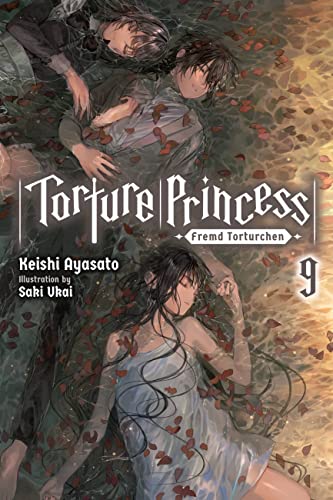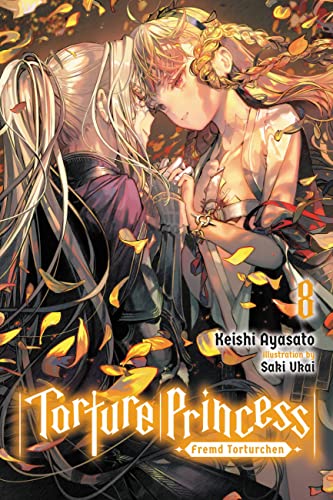By Keishi Ayasato and Saki Ukai. Released in Japan as “Isekai Goumon Hime” by MF Bunko J. Released in North America Yen On. Translated by Nathaniel Hiroshi Thrasher.
It might come as a surprise, particularly if you read the early books, but the main character in the Torture Princess novels is, in fact, the Torture Princess. Kaito is definitely the co-protagonist at the start, but as the volumes go on it becomes clear that he’s more an ideal, a symbol of hope, rather than the one whose character development we see as the books go on. That’s Elisabeth’s role, and in this final book we see her mask cracking more than any other, as she tries to keep up the “you want to die, fine, whatever” attitude even as she cries blood trying to stop everyone from dying. If you have read every volume of Torture Princess, Elisabeth is probably the main reason. (Yes, OK, Izabella and Jeanne are probably the main reason, I’ll get there.) The plot of this book is not really “will Elisabeth win?” or “will Alice win?”, it’s “how dark can the author make this and still have us care about the outcome?”. The answer is, unsurprisingly, pretty dark.
The big confrontation with Alice is happening, and unfortunately each person being brutally slaughtered leads to more power for Alice. Fortunately, a savior arrives (no, not him – not yet) to essentially remove Alice from the plot for the first half of the book, so that Elisabeth can deal with the fallout of everything else. There’s the Sand Queen, who may be dead but that’s not stopping them. There’s the battle between humans, mixed race and beastmen. And there’s the fact that even now she really wants to see Kaito one last time. Sadly, in the second half of the book Alice returns, and gets down to the mass extinction event that she’s now wedded to. Is there anything that can be stopped? And can the book actually manage to not kill everyone off?
Spoilers: not everyone dies. That said, a lot of people do die. I mentioned Izabella and Jeanne, and I must admit that Izabella has had “I am going to die tragically” written across her forehead from the moment we met her. Indeed, the arc of her character is how she keeps NOT dying. That and her love for Jeanne, which comes dangerously close to stealing the show here. I love Elisabeth, and she’s great here, but the best MOMENT in the final volume is the impromptu marriage ceremony that Izabella and Jeanne perform. It will make you smile and cry at the same time. I also appreciated how Alice’s story ended. There was literally nothing anyone in this world could do for her anymore, so she simply got dumped back in modern Japan. It’s cruel, yes, in a “not our problem” sort of way, but cruelty is old hat in Torture Princess. As for the very end, it’s possible to read it as metaphorical. It might seem a bit too pat if you read it literally. Either way, though, I’m fine with it.
In the end, though, it may be the grand guignol, over the top prose that was the main reason everyone ate this series up. Kudos to Nathaniel Hiroshi Thrasher for translating it. This was a good series, which I doubt is getting an anime anytime soon. A bit too much torture for that medium.



